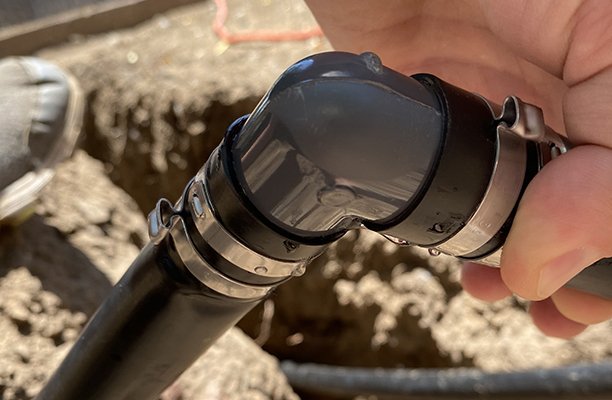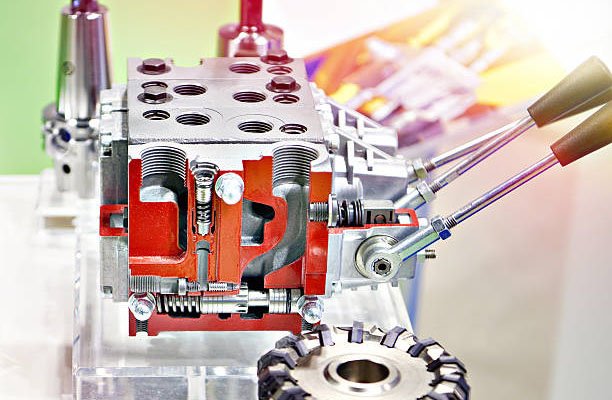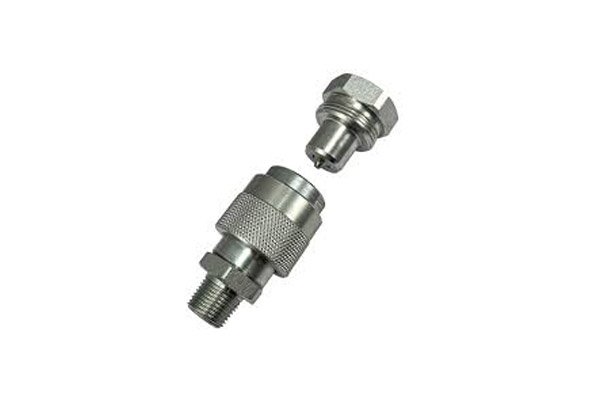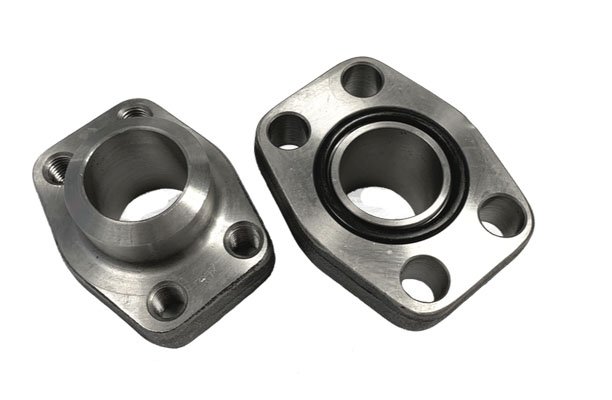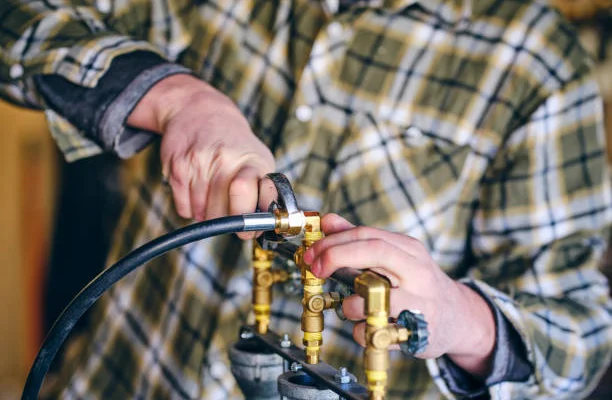Introduction
Hose clamps may appear insignificant in the larger mechanical picture, yet their role is absolutely critical in maintaining the integrity of fluid systems. These compact devices are used extensively in automotive engines, industrial machinery, home plumbing, and marine applications to secure hoses over fittings and prevent fluid leaks. A single hose clamp failure can lead to coolant loss, hydraulic pressure drops, or fuel leakage, resulting in operational downtime or even hazardous situations.
In this comprehensive guide, we will explore how to prevent hose clamp failures by identifying common issues, implementing best practices for installation and maintenance, and selecting the right clamps for specific applications. This proactive approach not only boosts reliability and safety but also reduces operational costs over time.
What Are Hose Clamps?
Definition and Purpose
A hose clamp, also known as a hose clip, is a fastening device designed to attach and seal a hose onto a nipple, barb, or fitting. The goal is to create a secure connection that prevents the escape of fluids or gases. Hose clamps are essential in systems where pressurized liquids are transported, such as in cooling systems, irrigation lines, and fuel delivery setups.
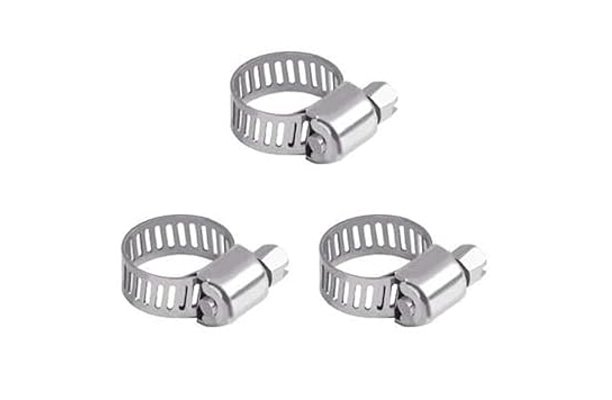
Types of Hose Clamps
- Screw/Band Clamps: The most common type, featuring a band that tightens via a screw mechanism. Ideal for general-purpose use and adjustable to different diameters.
- Spring Clamps: Made from spring steel and maintain constant tension. Best used in environments with thermal cycling.
- Wire Clamps: Basic and economical, often used in low-pressure applications. Made from bent wire tightened around the hose.
- Ear Clamps: Feature a special ‘ear’ that is crimped to tighten the clamp. Commonly used in OEM settings for permanent installations.
Each type serves a specific function and choosing the right one can significantly influence the lifespan and effectiveness of your hose connection.
Common Causes of Hose Clamp Failures
Improper Installation
Incorrect installation is one of the leading causes of hose clamp failure. Common mistakes include over-tightening, which can damage both the clamp and hose, or under-tightening, which results in leaks. Misalignment during installation can also cause uneven pressure distribution, leading to early wear or blowouts.
Material Fatigue
Hose clamps are often subjected to continuous stress from pressure fluctuations, vibration, and environmental exposure. Over time, the clamp material—especially if substandard—can weaken, lose elasticity, or crack. In high-temperature environments, the metal can become brittle, further increasing failure risk.
Incorrect Clamp Selection
Using a clamp not designed for the specific hose diameter or fluid type can be disastrous. For instance, selecting a low-grade steel clamp for a corrosive environment will lead to premature rust and breakdown. Similarly, using a non-spring clamp in an application with significant temperature fluctuations can result in loosening over time.
Environmental Factors
Corrosion from exposure to saltwater, acids, or harsh chemicals is a frequent culprit in clamp degradation. UV radiation and extreme hot/cold cycles can also compromise clamp materials, especially plastics or low-grade metals. If not accounted for, these environmental factors accelerate failure.
Vibration and Movement
In automotive and heavy machinery applications, constant vibration can loosen clamps and fatigue the metal. Flexible hoses move slightly during operation, and without clamps designed to accommodate such motion, leaks and failures become inevitable. Using the wrong type of clamp in these scenarios increases the likelihood of a breach.
Signs of Failing Hose Clamps
Visible Leaks
The most immediate and noticeable sign of a failing hose clamp is the presence of liquid at the hose junction. Whether it’s a slow drip or a steady stream, any fluid leaking from a hose-fitted joint should be a red flag. In automotive systems, this could mean coolant, oil, or fuel—each presenting unique hazards and requiring immediate attention.
Loose Connections
Over time, clamps may lose their tight fit due to temperature cycling or mechanical vibration. If the hose moves easily or there is space between the hose and the fitting, the clamp may no longer be doing its job. Loose connections increase the risk of hose detachment, especially in high-pressure or high-vibration environments.
Cracks, Rust, or Corrosion
Visual inspection can reveal early signs of deterioration. Cracks in plastic or rubber components of the clamp, or rust on metallic clamps, are indicators that the clamp is structurally compromised. Corroded clamps are especially dangerous as they can snap under pressure, leading to catastrophic system failures.
Unusual Noises or Pressure Drops
In some pressurized systems, a failing clamp may produce hissing or whistling sounds due to escaping gas or air. Additionally, noticeable pressure drops in the system could indicate a failing seal caused by a weakened or broken clamp.
How to Prevent Hose Clamp Failures
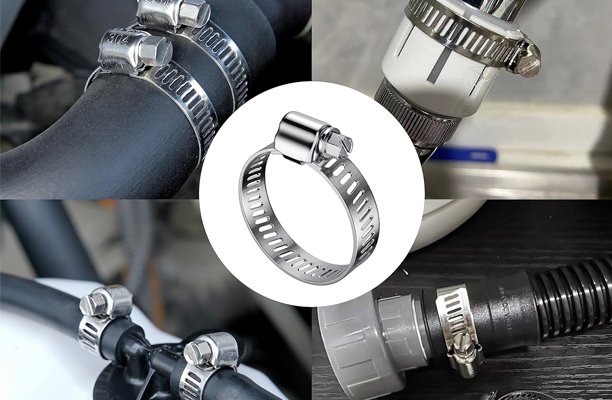
Select the Right Clamp for the Job
One of the most important preventive measures is choosing the appropriate clamp type and material. Stainless steel clamps are ideal for corrosive or marine environments, while spring clamps are better suited for applications involving temperature fluctuations. Always consider factors like pressure, temperature, chemical exposure, and mechanical stress when selecting a clamp.
Ensure Proper Installation
Follow the manufacturer’s torque specifications when tightening clamps. Over-tightening can damage both the hose and clamp, while under-tightening allows leaks. Align the clamp evenly and ensure it sits squarely on the hose without twisting. Use tools like torque screwdrivers or wrenches to achieve consistent tightness.
Perform Regular Inspections
In high-use or critical systems, hose clamps should be inspected as part of a scheduled maintenance routine. Look for signs of wear, corrosion, loosening, or cracking. Frequent inspections are especially vital in systems subjected to extreme temperatures, vibration, or chemical exposure.
Use Dual Clamps for High-Pressure Lines
When dealing with high-pressure lines, using two hose clamps instead of one can provide extra sealing strength and prevent blowouts. Position them a short distance apart and tighten them equally to distribute pressure evenly across the hose junction.
Account for Thermal Cycling
Thermal expansion and contraction can cause hose clamps to lose tension over time. Using spring clamps or self-adjusting clamps can help maintain pressure during temperature changes. Always ensure your clamp selection accommodates the full temperature range of the application.
Solutions for Common Hose Clamp Issues
Replace Old or Damaged Clamps
Reusing old or compromised hose clamps is a common yet avoidable mistake. Once a clamp shows signs of damage, corrosion, or wear, it should be replaced immediately. Keeping spare clamps on hand can prevent costly downtime or emergency fixes.
Upgrade to Higher Quality Materials
If clamp failure is a recurring issue, consider switching to a higher-grade material. For instance, 316 stainless steel offers superior resistance to corrosion and is ideal for marine or chemical applications. Investing in quality clamps upfront can significantly reduce maintenance costs and failures.
Apply Sealants or Lubricants Wisely
In certain cases, sealants or anti-seize lubricants can improve the effectiveness of hose clamps, particularly in high-pressure or high-temperature scenarios. However, it’s crucial to use products that are compatible with the hose and clamp materials, as improper usage can degrade rubber or plastic components.
Ensure Proper Fit Between Hose and Fitting
Even the best clamp won’t work if the hose doesn’t fit the fitting properly. Always verify that the hose’s internal diameter matches the fitting’s outer diameter, and the clamp is the correct size for both. Misfit components can lead to leaks, slippage, or clamp deformation.
Advanced Techniques and Tools
Torque Wrenches for Consistent Tightening
Using a torque wrench or torque screwdriver ensures that hose clamps are tightened to manufacturer-recommended specifications. This is particularly important in systems with pressurized fluids or sensitive components, where over- or under-tightening can result in performance issues or component failure. By applying consistent force, torque-controlled tools reduce the risk of human error and help maintain a reliable seal over time.
Digital Monitoring Systems
Modern fluid systems in high-tech industries or mission-critical machinery now employ digital sensors that monitor pressure and leak detection in real-time. When integrated with hose fittings, these systems can provide alerts or shut down processes before a hose clamp failure causes damage. While more common in industrial and aerospace settings, these technologies are becoming increasingly accessible and offer a proactive solution to clamp monitoring.
Professional Installation Services
For high-stakes applications—such as in aerospace, chemical processing, or critical automotive systems—outsourcing hose clamp installation to trained professionals can be a worthwhile investment. Professionals bring not only technical expertise but also access to precision tools, high-grade components, and comprehensive quality assurance protocols, ensuring optimal long-term performance and reliability.
Maintenance Best Practices
Establish Scheduled Maintenance Intervals
Preventive maintenance is essential for any system relying on hose clamps. Establishing a routine inspection schedule—whether weekly, monthly, or based on usage hours—helps identify minor issues before they escalate. Maintenance intervals should be adapted based on the application’s severity, fluid type, and environmental conditions.
Implement a Detailed Inspection Checklist
A thorough inspection routine should include checking for visible leaks, corrosion, loosening, cracking, and hose deformation. Use this checklist to assess both the clamp and the hose connection. Documenting these inspections helps identify wear patterns and contributes to a data-driven approach to component lifecycle management.
Train Maintenance Personnel
Even the best hardware can fail if not installed or maintained correctly. Train all technicians and maintenance staff in proper clamp selection, installation torque requirements, and environmental considerations. Providing access to standardized procedures and reference materials ensures consistency and improves overall system reliability.
Use Tags or Labels for Critical Clamps
In complex systems with numerous hose clamps, tagging high-risk or critical connection points allows for prioritized inspections. Color-coded labels or digital asset tracking can streamline maintenance efforts and help teams focus on components that pose the greatest operational risks.
Case Studies: Hose Clamp Failures and Fixes
Automotive Example: Coolant System Overheating
A vehicle owner experienced repeated engine overheating. Inspection revealed that a low-quality screw clamp was over-tightened, cutting into the rubber coolant hose. Over time, this led to a small leak that eventually drained enough coolant to trigger engine overheating. Replacing the clamp with a properly sized, stainless steel screw clamp and installing it using torque specifications resolved the issue permanently.
Industrial Example: Pipe Burst in Manufacturing Plant
In a food processing facility, a key water line burst due to a corroded clamp. The clamp, made of carbon steel, had been exposed to cleaning chemicals that accelerated corrosion. The resulting leak caused water damage and halted production. The solution involved switching to 316-grade stainless steel clamps and implementing a chemical compatibility review for all components exposed to industrial cleaners.
Marine Example: Fuel Line Failure in Saltwater Environment
A fishing vessel suffered engine failure when a fuel line clamp snapped during operation. Investigation showed that standard steel clamps were used in a saltwater environment, where corrosion had weakened them. The solution involved upgrading to dual 316 stainless steel marine-grade clamps and scheduling quarterly inspections. The fix not only restored functionality but prevented future failures.
Advanced Techniques and Tools
Torque Wrenches for Consistent Tightening
Using a torque wrench or torque screwdriver ensures that hose clamps are tightened to manufacturer-recommended specifications. This is particularly important in systems with pressurized fluids or sensitive components, where over- or under-tightening can result in performance issues or component failure. By applying consistent force, torque-controlled tools reduce the risk of human error and help maintain a reliable seal over time.
Digital Monitoring Systems
Modern fluid systems in high-tech industries or mission-critical machinery now employ digital sensors that monitor pressure and leak detection in real-time. When integrated with hose fittings, these systems can provide alerts or shut down processes before a hose clamp failure causes damage. While more common in industrial and aerospace settings, these technologies are becoming increasingly accessible and offer a proactive solution to clamp monitoring.
Professional Installation Services
For high-stakes applications—such as in aerospace, chemical processing, or critical automotive systems—outsourcing hose clamp installation to trained professionals can be a worthwhile investment. Professionals bring not only technical expertise but also access to precision tools, high-grade components, and comprehensive quality assurance protocols, ensuring optimal long-term performance and reliability.
Maintenance Best Practices
Establish Scheduled Maintenance Intervals
Preventive maintenance is essential for any system relying on hose clamps. Establishing a routine inspection schedule—whether weekly, monthly, or based on usage hours—helps identify minor issues before they escalate. Maintenance intervals should be adapted based on the application’s severity, fluid type, and environmental conditions.
Implement a Detailed Inspection Checklist
A thorough inspection routine should include checking for visible leaks, corrosion, loosening, cracking, and hose deformation. Use this checklist to assess both the clamp and the hose connection. Documenting these inspections helps identify wear patterns and contributes to a data-driven approach to component lifecycle management.
Train Maintenance Personnel
Even the best hardware can fail if not installed or maintained correctly. Train all technicians and maintenance staff in proper clamp selection, installation torque requirements, and environmental considerations. Providing access to standardized procedures and reference materials ensures consistency and improves overall system reliability.
Use Tags or Labels for Critical Clamps
In complex systems with numerous hose clamps, tagging high-risk or critical connection points allows for prioritized inspections. Color-coded labels or digital asset tracking can streamline maintenance efforts and help teams focus on components that pose the greatest operational risks.
Case Studies: Hose Clamp Failures and Fixes
Automotive Example: Coolant System Overheating
A vehicle owner experienced repeated engine overheating. Inspection revealed that a low-quality screw clamp was over-tightened, cutting into the rubber coolant hose. Over time, this led to a small leak that eventually drained enough coolant to trigger engine overheating. Replacing the clamp with a properly sized, stainless steel screw clamp and installing it using torque specifications resolved the issue permanently.
Industrial Example: Pipe Burst in Manufacturing Plant
In a food processing facility, a key water line burst due to a corroded clamp. The clamp, made of carbon steel, had been exposed to cleaning chemicals that accelerated corrosion. The resulting leak caused water damage and halted production. The solution involved switching to 316-grade stainless steel clamps and implementing a chemical compatibility review for all components exposed to industrial cleaners.
Marine Example: Fuel Line Failure in Saltwater Environment
A fishing vessel suffered engine failure when a fuel line clamp snapped during operation. Investigation showed that standard steel clamps were used in a saltwater environment, where corrosion had weakened them. The solution involved upgrading to dual 316 stainless steel marine-grade clamps and scheduling quarterly inspections. The fix not only restored functionality but prevented future failures.
Environmental Considerations
Eco-Friendly Material Choices
In today’s sustainability-focused world, the environmental impact of maintenance materials—including hose clamps—cannot be overlooked. Opting for hose clamps made from recyclable metals such as stainless steel or aluminum not only enhances durability but also reduces landfill waste when components are replaced. Avoiding PVC-coated or composite clamps in favor of fully recyclable options is an easy step toward more eco-conscious operations.
Resistance to Harsh Environmental Conditions
Different environments require different clamp materials and coatings. For example:
- Marine environments: Demand high corrosion resistance—316 stainless steel is preferred.
- High-humidity zones: Risk rusting; stainless steel or galvanized clamps are ideal.
- Chemical plants: Require chemical-resistant coatings or fluoropolymer-lined clamps.
Choosing materials suited to the environmental conditions reduces the frequency of replacements, thus decreasing material waste and potential fluid contamination.
Minimizing Replacement Frequency
By selecting high-quality clamps and ensuring correct installation, organizations can reduce how often they need to replace components. This not only cuts material costs but also helps lower the carbon footprint associated with logistics, waste disposal, and new clamp production.
Cost Implications
Downtime and Operational Losses
When a hose clamp fails, the resulting leak or hose detachment can halt operations entirely. In manufacturing, this could mean delayed production lines; in vehicles, it may lead to roadside breakdowns. The cost of these downtimes often far exceeds the price of a proper clamp or professional installation. Being proactive with clamp maintenance can save thousands in reactive repairs and lost productivity.
Cost of Premium vs. Standard Clamps
While premium clamps such as those made from 316 stainless steel may cost more initially, their longevity and resistance to environmental wear dramatically reduce replacement frequency. For example, a $5 high-grade clamp might last ten years, while a $1 low-grade clamp might fail annually—totaling $10 over the same period and adding more labor costs.
Conclusion
Hose clamps, though small in size, play a significant role in the integrity of fluid systems across industries. Understanding why hose clamps fail and taking steps to prevent these failures is crucial to system performance, safety, and cost-efficiency. By selecting the correct type of clamp, ensuring proper installation, performing regular maintenance, and responding to early warning signs, you can drastically reduce failure rates and extend equipment life.
Whether you’re maintaining a fleet of vehicles, managing a factory floor, or operating a marine vessel, investing in high-quality clamps and a disciplined inspection routine pays off. The result is fewer failures, less downtime, and peace of mind knowing your systems are secure and optimized.
FAQs
Q1: How often should hose clamps be inspected in high-vibration systems?
Hose clamps in high-vibration environments, such as engines or industrial machinery, should be inspected at least every 3 months. This helps detect loosening or fatigue early, preventing catastrophic failures.
Q2: Can hose clamps be reused if they look undamaged?
While some clamps appear reusable, reusing them is generally not recommended—especially in critical systems. Metal fatigue and stress from prior use may compromise the clamp’s ability to maintain a secure seal.
Q3: What’s the difference between 304 and 316 stainless steel hose clamps?
Both are corrosion-resistant, but 316 stainless steel offers higher resistance to saltwater and harsh chemicals. It is preferred for marine, chemical, and food-grade applications where longevity and durability are essential.
Q4: What causes a hose clamp to fail even if it’s properly tightened?
Factors such as material incompatibility, environmental corrosion, improper hose sizing, or dynamic loads like vibration can still cause failures despite proper installation. Always assess the full system environment, not just the clamp torque.
Q5: Are there hose clamps designed specifically for extreme temperatures?
Yes, spring clamps or thermally compensating clamps are designed to maintain consistent tension during expansion and contraction cycles in extreme hot or cold conditions. They are ideal for automotive or aerospace applications.

